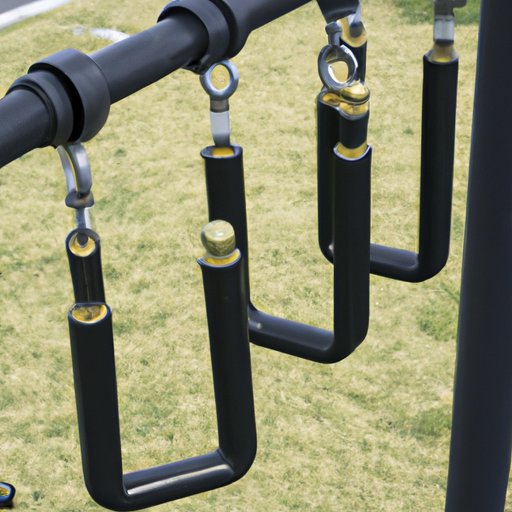Introduction
Calisthenics is a form of exercise that uses only your bodyweight for resistance. This type of training is an effective way to build strength and muscle, improve flexibility, and get fit overall. To get the most out of calisthenics, it’s important to understand the basics of how to get started.
Definition of Calisthenics
Calisthenics is a form of exercise that relies on bodyweight movements such as push-ups, pull-ups, squats, lunges, and more. It is designed to challenge your muscles, increase your heart rate, and help you burn calories. Unlike weight lifting or other forms of resistance training, calisthenics requires minimal equipment and can be done anywhere with just your own bodyweight.
Benefits of Calisthenics
Studies have found that calisthenics can provide numerous health benefits. It has been shown to improve cardiovascular health, muscular strength and endurance, flexibility, balance, coordination, agility, and posture. Additionally, calisthenics can reduce stress levels, boost energy levels, and improve mood. As an added bonus, calisthenics can also help you save time and money since it requires little to no equipment.
Choosing the Right Exercises
When starting out with calisthenics, it’s important to choose the right exercises for your current fitness level. This will ensure that you are challenging yourself without putting too much strain on your body.
Assessing Your Level
Before selecting exercises, it’s important to assess your current fitness level. This will give you a better idea of which exercises are appropriate for you. For example, if you are new to calisthenics, you may want to start with basic bodyweight exercises such as squats and push-ups. If you are more advanced, you may want to incorporate more challenging exercises such as pull-ups or plyometric jumps.
Selecting Exercises
Once you’ve assessed your fitness level, you can begin selecting exercises. It’s important to choose exercises that target different muscle groups and challenge your body in different ways. For example, you may want to include exercises that focus on the upper body, lower body, core, and cardiovascular system. Additionally, you may want to mix up the types of exercises you are doing, such as using bodyweight exercises, plyometrics, and isometrics.
Establishing a Schedule
Creating a workout schedule is essential for staying consistent with your calisthenics routine. Scheduling workouts ahead of time helps you stay accountable and ensures that you are making time to exercise regularly.
Scheduling Workouts
To create a workout schedule, start by deciding how often you want to exercise. Beginners should aim for 2-3 times a week, while more experienced exercisers may want to exercise 4-5 times a week. Next, decide on a specific time for each workout. Make sure to plan your workouts in advance so that you can stick to the schedule.
Sticking to the Schedule
Once you have established a workout schedule, it’s important to stick to it. This means not skipping workouts or making excuses. To help stay motivated, find a workout buddy or join a calisthenics class. Additionally, setting small goals and rewarding yourself for reaching them can help keep you on track.
Using Proper Form
Using proper form is essential for getting the most out of your calisthenics workouts. Using improper form can lead to injury, so it’s important to learn the proper technique for each exercise.
Learning Proper Form
The best way to learn proper form is to watch videos or take classes from a certified instructor. You can also consult books or online resources for information about proper form. Regardless of the source, make sure to practice each exercise several times before attempting to do it at full intensity.
Practicing Proper Form
Once you have learned the proper form for each exercise, it’s important to practice it regularly. Focus on keeping your back straight, engaging your core, and breathing properly. Additionally, pay attention to your body and stop if something feels wrong. Finally, make sure to warm up and cool down after each workout.
Investing in Quality Equipment
Investing in quality equipment can help make your calisthenics workouts more effective and enjoyable. Quality equipment can also help prevent injuries and make it easier to achieve your fitness goals.
Reasons to Invest
Investing in quality equipment can help you get the most out of your workouts. Quality equipment is typically more durable than cheaper options and can help you perform exercises safely and effectively. Additionally, quality equipment is often adjustable, meaning you can adjust it to your size and fitness level.
Types of Equipment
When investing in equipment for calisthenics, there are a few key pieces to consider. A pull-up bar is a great piece to invest in, as it allows you to do pull-ups and other upper-body exercises. Resistance bands are also useful, as they can be used for a variety of exercises. Other pieces of equipment to consider include a jump rope, dip bars, and an ab wheel.
Conclusion
Calisthenics is a great way to get fit, build strength, and improve overall health. To get the most out of calisthenics, it’s important to choose the right exercises, establish a schedule, use proper form, and invest in quality equipment. By following these tips, you can be sure to get the most out of your calisthenics workouts.
Summary of Benefits
Calisthenics offers numerous health benefits, including improved cardiovascular health, muscular strength and endurance, flexibility, balance, coordination, agility, and posture. Additionally, calisthenics can reduce stress levels, boost energy levels, and improve mood.
Final Thoughts
Calisthenics is an effective and affordable way to get fit. With the right knowledge and dedication, anyone can start doing calisthenics and reap the rewards. So what are you waiting for? Get started today!
(Note: Is this article not meeting your expectations? Do you have knowledge or insights to share? Unlock new opportunities and expand your reach by joining our authors team. Click Registration to join us and share your expertise with our readers.)
